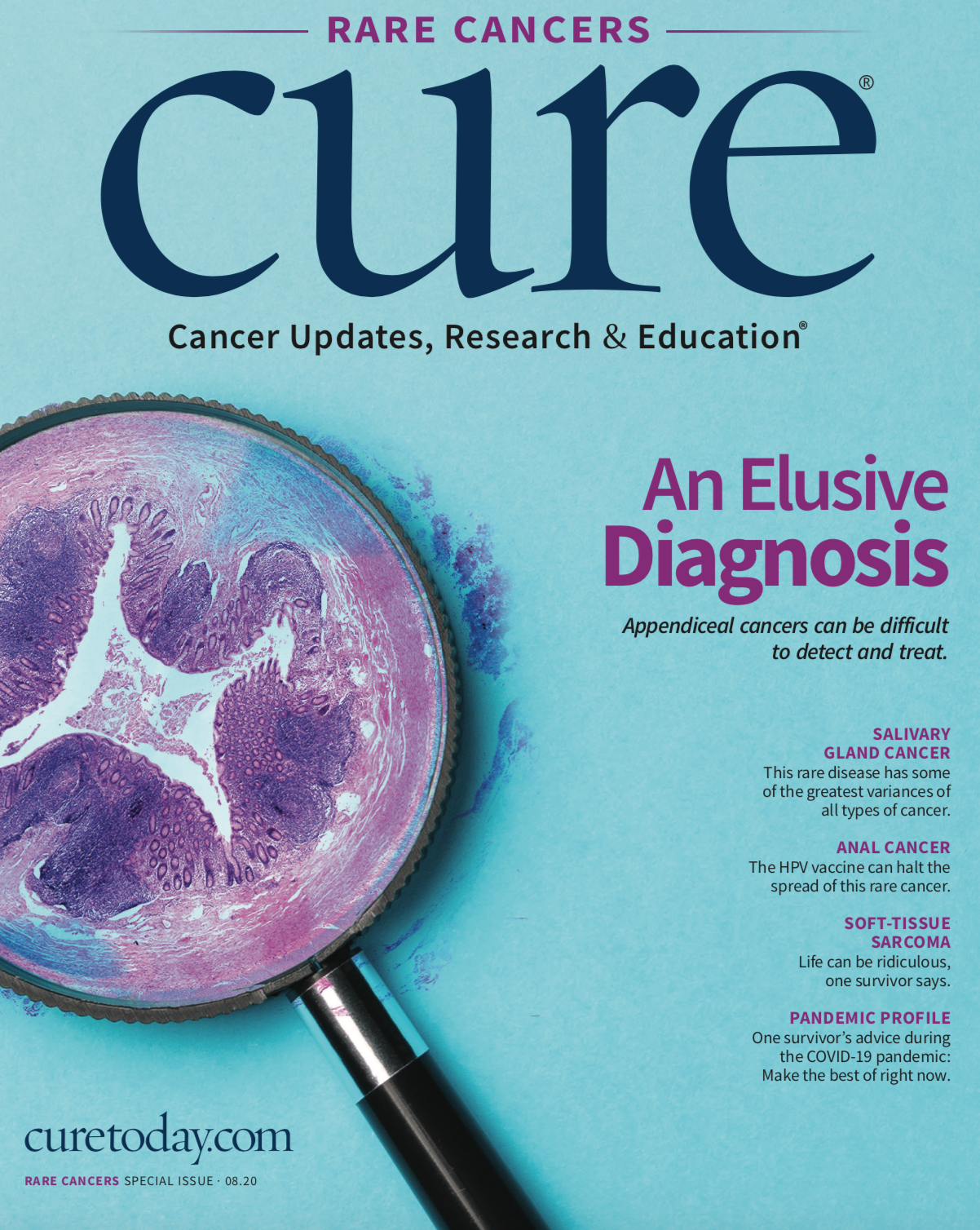Publication
Article
CURE
Laughing In The Face of A Brain Tumor
Author(s):
After receiving a stage 4 glioblastoma diagnosis, one woman taps into her sense of humor — and turns that into a book.
In the middle of the night, in October 2018, Kelly Fosso Rodenberg awoke to what felt like lightning bolts running through the fingers on her left hand. Given that she had worked on a computer for 35 years, she thought it might be a pinched nerve.
But in the days that followed, Rodenberg noticed some oddities, such as typing mistakes and a twitch in her hand. Then, while slicing an apple for her breakfast, she cut her thumb but didn’t feel it.
Rodenberg called a clinic in Minneapolis but couldn’t get in for two weeks. A nurse recommended that, based on her symptoms, she go to a walk-in clinic. From there she was sent to a neurologist.
Within 10 days, Rodenberg received a diagnosis of stage 4 glioblastoma (GBM), a rare and aggressive type of brain cancer. Although devastated, Rodenberg relied on her sense of humor to help her through surgery, radiation and chemotherapy.
Channeling her experience as a patient and caregiver for her husband, who has a rare blood disorder called POEMS syndrome, she wrote a book, “There’s Something Going On Upstairs: Learning to Laugh My Way through a Cancerous Brain Tumor, One Chemo Cycle at a Time.”
In an interview with CURE ®, she details her diagnosis and biggest challenges and reveals who keeps her laughing.
CURE®: How quickly did the neurologist know that something wasn’t right?
Rodenberg: It took the neurologist 30 minutes to say, “I think there’s something going on upstairs.” We tried to get an appointment for an MRI, which didn’t happen because it was late in the day on a Friday. He said, “I’m so sorry. We’ll have to send you home, but if you have any other symptoms over the weekend, I want you to go to the emergency room.” I got up Saturday morning and my balance was completely off. So we went to the ER and 45 minutes later they’re showing me a golf ball-size brain tumor above my right ear.
My husband and I made the decision to get a second opinion. They were telling me in Minneapolis that there was a 50-50 chance after surgery that my entire left side was going to be paralyzed. We didn’t like that option.
So that’s when we decided to go to Mayo Clinic, and that surgeon said, “I think I can input a pinpoint insertion from underneath your tumor, so I don’t affect your motor bands and your sensory bands. And if that’s the case, I give you about a 5% chance that your movement will be any different.” Today, my hand is the same after surgery as it was before, which is a blessing. I’ve done a little bit of therapy, but it hasn’t helped a whole lot, so I still type with one hand.
What has been the most challenging aspect of dealing with your cancer?
The fatigue was just terrible. There were a couple of months when I was in bed for 12 days straight and thought, “Seriously, I have to go brush my teeth today?” But almost equally — and again, I’ve been a caretaker for my husband and now I’m the patient — it’s challenging to ask for help. It’s been a learning curve to be patient with myself. Not everything happens the way it
used to, so you have to step back and find a different way to do daily things. I laugh because I told my oncologist, “Well, my husband was able to keep me both busy and quiet for a solid 45 minutes when he asked me to take a twist-tie off a bag.” Because you have one hand. Or folding a load of clothes — you have one hand, so it takes twice as long.
In between the bouts of radiation and chemotherapy, it’s easy to pull a blanket over your head and get very depressed. I learned early on that I needed to find light in this whole situation. That’s when the writing of this book came to be. It started out as a journal for myself, but the more I typed, the better I felt. And I thought, “This could actually help somebody along the way — having both the caregiver and now the patient experience.”
Can readers expect a lesson from “There’s Something Going On Upstairs”?
It’s not always easy. It’s not always fun. But the way you react ... It doesn’t do anybody any good — yourself, your caregiver, your spouse — to bury your head. Try to have a sunnier disposition and make the best out of a bad situation. I think the turning point for me was when I saw and heard how I was helping people get through their struggles. That is a complete motivator.
Do you look back on any moments since the diagnosis that stand out as humorous?
I enjoy poking fun of myself, and one of my greatest joys is that my brothers and nephews still poke fun at me at family get-togethers. I joke that I have an official “brain tumor card” and I can use it anytime. It’s something I have for medical reasons, but it’s also a way to poke fun, and it helps people know that you still enjoy a laugh.




